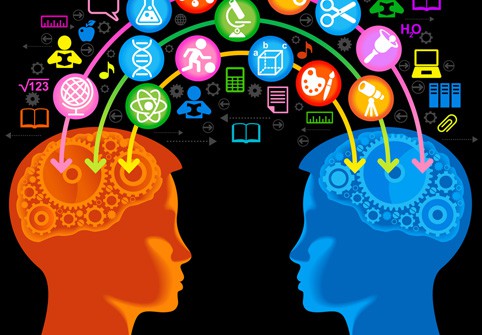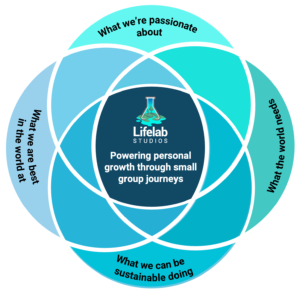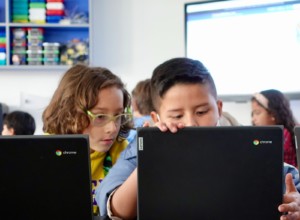Community Partnerships for the Digital Learning Revolution

“Community Partnerships for the Digital Learning Revolution” by Michael Robbins first appeared on the US Department of Education Homeroom blog.
 I wasn’t surprised to learn that my hometown of Huntsville, Alabama –The Rocket City – has launched one of the largest school district transitions to digital learning in the nation. I recently visited Huntsville to learn from their experience, and my conversations there reinforced for me that community and family partnerships are essential for the success of digital learning. We have unprecedented investment in education technology, but we don’t yet have the corresponding developments in partnerships to help transitions to digital learning succeed.
I wasn’t surprised to learn that my hometown of Huntsville, Alabama –The Rocket City – has launched one of the largest school district transitions to digital learning in the nation. I recently visited Huntsville to learn from their experience, and my conversations there reinforced for me that community and family partnerships are essential for the success of digital learning. We have unprecedented investment in education technology, but we don’t yet have the corresponding developments in partnerships to help transitions to digital learning succeed.
Community partnerships are key to realizing a digital learning revolution that is more than trading textbooks for tablets. This is an inflection point in education – a critical opportunity to transform how schools, parents, and community-based organizations collaborate to ignite student curiosity and engagement in learning.
Community and family partnerships can also reduce the possibility that digital learning transitions will exacerbate achievement gaps. Students that face the greatest challenges in and outside school need comprehensive supports to evolve so that digital learning doesn’t further disadvantage them.
Our community organizations, including faith-based organizations, have tremendous opportunities to support and shape the digital learning transition through four key areas of collaboration:
- Expanding access and digital literacy;
- Bridging between schools, families, and communities;
- Service and volunteering in education; and
- Creating new avenues for anytime-anywhere learning.
Expanding access and digital literacy.
Many students don’t have access outside school to computers, broadband connections, and basic technical support. The Obama Administration is working with a public-private partnership called Connect2Compete to expand low-cost internet, computers, and digital literacy instruction to low-income families. Connect2Compete is building a network of local community partners, and community organizations can go here to learn more and link up with their efforts.
Bridging between schools, families, and communities.
Community and faith organizations can bridge the gap between home and school with their strong connections to families. Internet-based student data and learning management systems can improve collaboration between teachers, families, and community partners. Community-based organizations like Big Brothers Big Sisters of Eastern Missouri, a Together for Tomorrow challenge winner, are using joint data systems with schools to focus student support services where they have the greatest impact.
A new report from the Department on Expanding Evidence Approaches for Learning in a Digital World, highlights the need for more efforts that connect community partners with school data systems. The report emphasizes that “young people learn and develop in a wide range of settings,” and we need to better use data “to support the full range of student needs and interests—both inside and outside schools and classrooms—to improve learning outcomes.”
Service and volunteering in education.
Digital learning systems are making it possible for partners to assist students using lessons developed by educators that are aligned with the school curriculum. This is expanding the range of volunteers that are confident and effective at assisting students inside and outside the classroom. Service and volunteer partners can also advance student learning through digital tools such as remote connections into classrooms, Open Education Resources, and internet-connected real-world experiences.
Digital partnerships aren’t limited to academic assistance, and can boost other key student outcomes. iMentor is using digital learning to improve student behavior and increase college access. Their internet-based systems help train and support adult volunteers, who mentor students both virtually and in-person.
Creating new avenues for anytime-anywhere learning
Digital learning partnerships can help community-based organizations transform American education by expanding learning beyond the classroom. “Anytime-anywhere learning” is a key goal in our education technology plan and schools can’t accomplish this goal alone. Schools can partner with community-based initiatives like the HIVE Learning Networksthat use new technologies and media to better connect students to their interests, aspirations, communities, and careers.
Community partners are using digital badges to change how and where students earn academic credit. For example, the Providence After School Alliance is developing digital badges as a central component of their credit-bearing afterschool and internship programs.
Getting started with digital learning partnerships.
The Department is participating in Digital Learning Day on February 6. Community organizations can learn more and jumpstart their digital learning partnerships atdigitallearningday.org.
There are valuable information resources at our Office of Education Technology web pageand Epic-ed, our initiative to support digital learning transitions. If you are already part of a digital learning partnership, share your examples on our Facebook page atfacebook.com/edpartners.
The guidebooks on community partnerships and digital learning are yet to be written, so it is vital that community partners, families, schools, and education technology initiatives work together to develop their pathways to digital learning partnerships. Together we can ensure that digital learning boosts engagement and learning for all of our students. Education technology can help us create a community culture of education success, where everyone sees education as his or her responsibility, and there are clear and compelling pathways to assist.
Michael Robbins is senior advisor for nonprofit partnerships at the U.S. Department of Education.





0 Comments
Leave a Comment
Your email address will not be published. All fields are required.